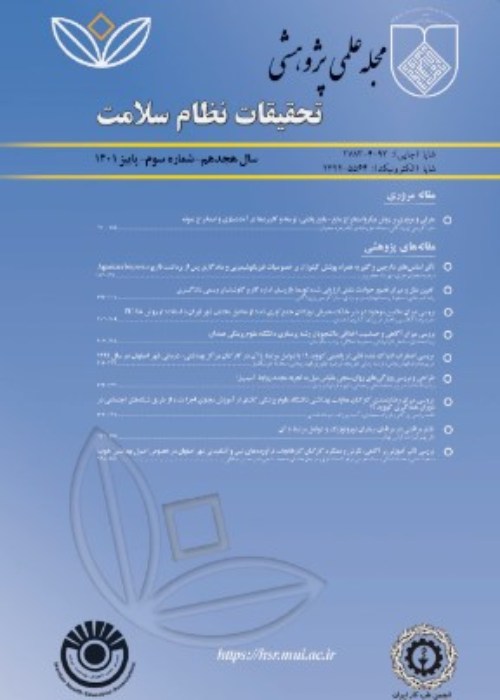A Survey of the Efficiency of Activated Carbon Derived from Moringa Oleifera Pod in the Removal of Phenol from Aqueous Solutions
Author(s):
Abstract:
Background
Due to the stability, water and environmental pollution, and health concerns of phenol compounds, phenol removal is important. For this purpose, the present study evaluated the efficiency of phenol removal of activated carbon derived from Moringa oleifera pod from aqueous solutions.Methods
In this study, the Moringa oleifera pod was used as carbon source in activated carbon preparation. The activated carbon preparation protocol included dehydration, debris removal, and thermal activation. After preparation of activated carbon, the effective parameters on phenol adsorption process including solution pH, contact time, initial concentration of phenol, and activated carbon doses were studied. In addition, the obtained data was tested via Langmuir and Freundlich isotherms.Findings: The obtained results showed that the highest phenol adsorption was achieved at neutral solution pH. With increasing or reducing of solution pH, phenol removal efficiency decreased. Moreover, with increasing of contact time from 5 minutes to 840 minutes, phenol removal efficiency improved from 23% to 94%. In addition, with increasing of initial concentration of phenol, phenol removal efficiency had a descending trend. Thus, with the use of 0.5 g/l activated carbon and initial concentration of 7.5 mg/l, phenol removal efficiency was 76%, and at the concentrations of 10 and 15 mg/l, removal efficiency reduced to 71% and 66%, respectively. The obtained results were in line with the Freundlich isotherm and maximum adsorption capacity varied from 6.5 to 7.2 mg/g in the studied initial phenol concentration.
Conclusion
The obtained results demonstrated that activated carbon derived from Moringa oleifera pod had high efficiency in phenol removal from aqueous solutions. With respect to the fact that the Moringa oleifera is grown in southern Iran and does not have a specific application, the Moringa oleifera pod could be considered as a low cost source for activated carbon preparation.Keywords:
Language:
Persian
Published:
Journal of Health System Research, Volume:13 Issue: 2, 2017
Pages:
252 to 258
magiran.com/p1741706
دانلود و مطالعه متن این مقاله با یکی از روشهای زیر امکان پذیر است:
اشتراک شخصی
با عضویت و پرداخت آنلاین حق اشتراک یکساله به مبلغ 1,390,000ريال میتوانید 70 عنوان مطلب دانلود کنید!
اشتراک سازمانی
به کتابخانه دانشگاه یا محل کار خود پیشنهاد کنید تا اشتراک سازمانی این پایگاه را برای دسترسی نامحدود همه کاربران به متن مطالب تهیه نمایند!
توجه!
- حق عضویت دریافتی صرف حمایت از نشریات عضو و نگهداری، تکمیل و توسعه مگیران میشود.
- پرداخت حق اشتراک و دانلود مقالات اجازه بازنشر آن در سایر رسانههای چاپی و دیجیتال را به کاربر نمیدهد.
In order to view content subscription is required
Personal subscription
Subscribe magiran.com for 70 € euros via PayPal and download 70 articles during a year.
Organization subscription
Please contact us to subscribe your university or library for unlimited access!


